I don't know about you, but I am really picky with my Calamares, and I mean really picky. I won't eat them if they are battered, greasy, soggy or tough. In fact, unless they are spot on, I won't eat them. My wife gets all anxious every time I order Calamares (deep fried squid rings) in a bar because she knows the score. As soon as they are placed on the table she can see in my face if I'm going to eat them or not. Basically, if they are battered or reflect the light, I'm not eating them.
I´m a huge fan of Spanish tapas and Calamares are one of my favourites. But I must admit it took several years to get round to eating them as my first few experiences with Calamares was absolutely terrible; tough, greasy and tasteless. So I pretty much scrapped them from my menu. But it was in a restaurant in Valencia where I developed almost an addiction for Calamares. I tried them again and I was hooked once and for all. They were perfect and became my benchmark Calamares. The restaurant was Marisqueria Cervera and everything about them was ideal. They were not battered but fried in flour. They were dry and incredibly crispy but not at all heavy. The coating was perfect and of course, they were about as tender as they can be. The perfect tapas. If you ever happen to be in Valencia you must pay them a visit. http://www.marisqueriascivera.com
Once you have tried Calamares this good it makes it difficult to enjoy Calamares in other establishments, but I never give up. They are my tapas of choice with a cold beer before lunch. If you have read any of my other posts you will know I like cooking, so naturally, I went on a quest to learn how to make the perfect Calamares and that is exactly what I am going to share with you.
To be quite honest it is really simple but as always the fresher the calamari/squid the better. However, it is not always possible to get really fresh squid so a lot of the time you will not be impressed by the result as they turn out tough and chewy. That said there is a trick of the trade that is used by many restaurants to ensure their calamares are tender to the bite. And lone behold it is milk.
Milk has long been used as a tenderiser for meats but it also works wonders with squid, only, it is essential to add salt to the milk so that the squid absorbs the milk and thus softens the texture and collagen. The amount of salt is approximately half a teaspoon for every 400ml of whole fat milk. The amount of milk necessary will be half the weight of the calamari. So if you have 800 grams of calamari - 400 ml of whole fat milk and 1/2 teaspoon of salt - once mixed place them in the fridge for 12 hours or overnight. If you can get them fresh from the fish market, great you can jump this step, but in the supermarket, they are almost all defrosted squid. When you have your squid, clean them, discard the head and the innards and remove the spinal bone, which just slides out. Then cut up the squid into rings about 1cm in width. The add them to the milk.
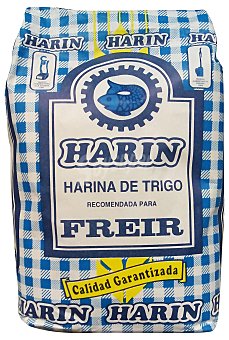 Once tenderised, drain the milk and let them sit in a sieve for about 30 minutes until they have completely drained and come up to room temperature. Dry them with kitchen paper towels to remove excess liquid and then cover them with wheat flour - 'harina de trigo' which is special for frying - it is not as fine as other flours. The one I use is HARIN. Make sure they are covered in abundant flour, so don't put too many in the flour at once.
Once tenderised, drain the milk and let them sit in a sieve for about 30 minutes until they have completely drained and come up to room temperature. Dry them with kitchen paper towels to remove excess liquid and then cover them with wheat flour - 'harina de trigo' which is special for frying - it is not as fine as other flours. The one I use is HARIN. Make sure they are covered in abundant flour, so don't put too many in the flour at once.
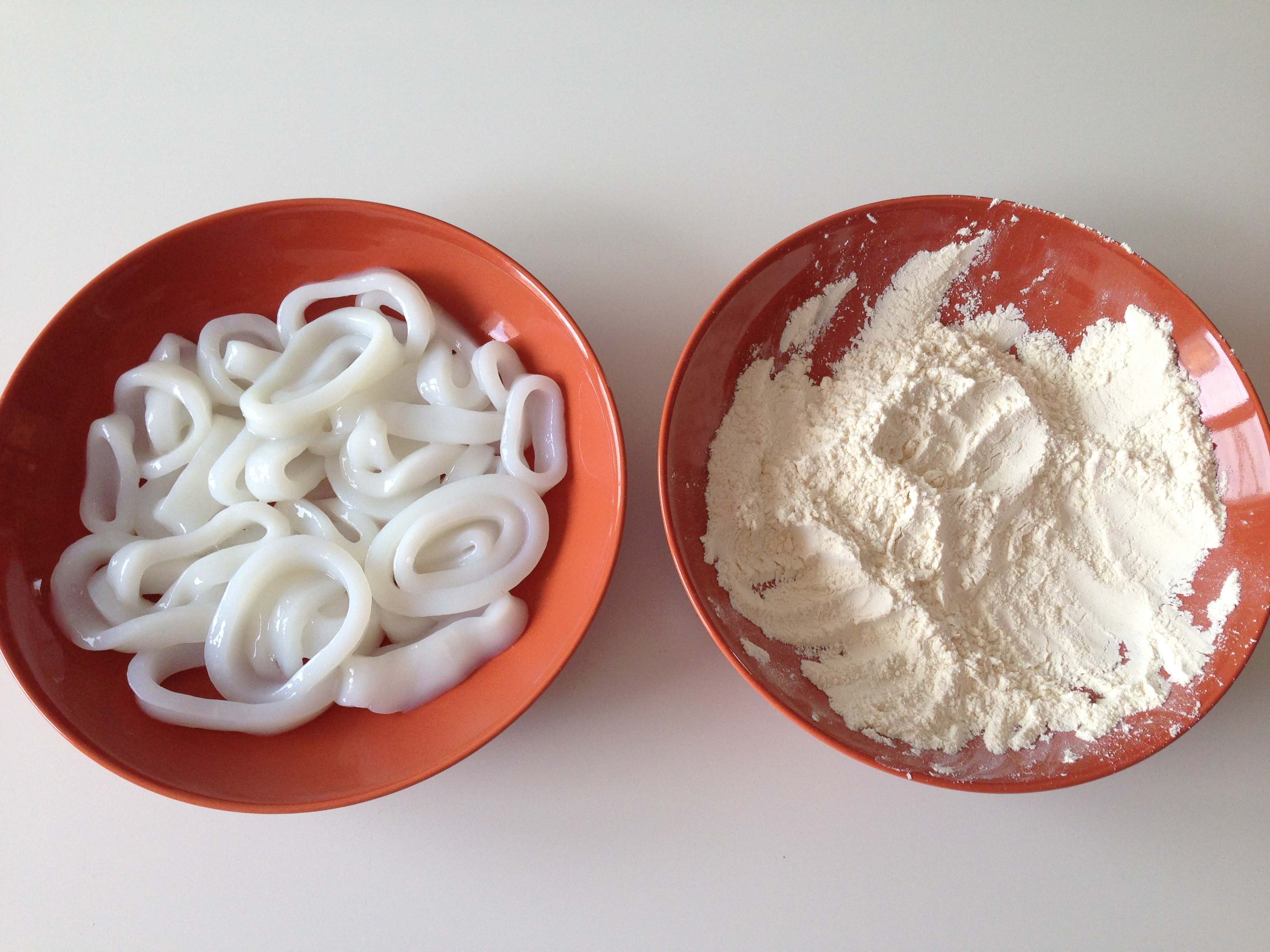
.jpg)
Make sure you have a deep fat fryer or a deep frying pan with abundant extra virgin olive oil. When it is at 170ºC or on the point of smoking you are ready to go - you can use bread to test the temperature - drop in a little bit and observe the colour it turns - it should go golden very quickly.
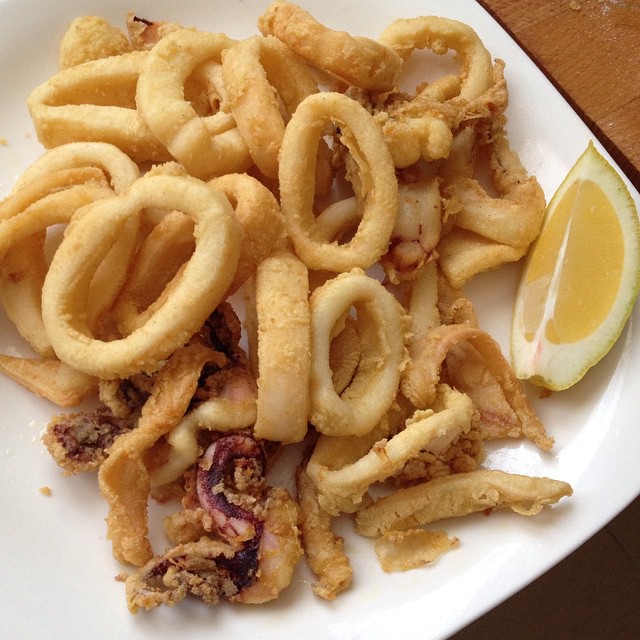
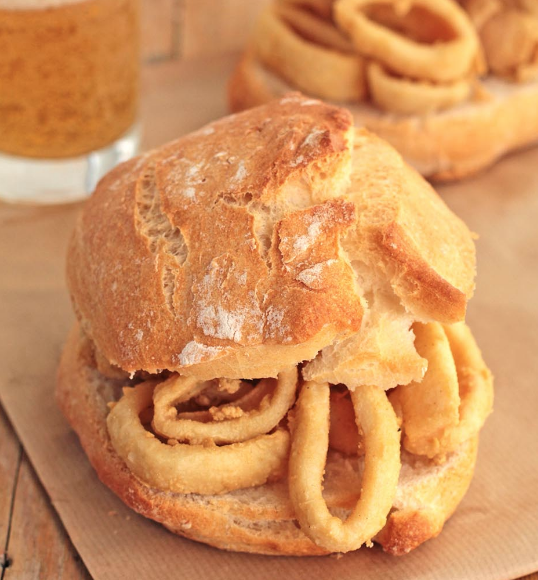
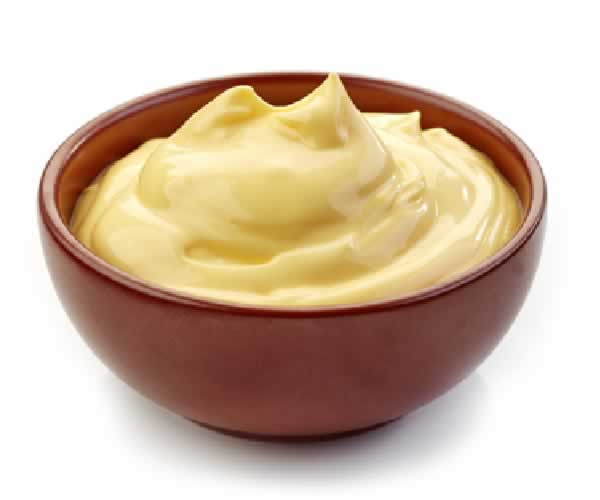
Just before you put them in, squeeze the squid and the flour firmly with your hands and then place in the hot oil. Don't put too many in at once, make sure they have room to move around and aren't on top of each other. Let them go golden crisp and take them out, let then drain properly and then place them on kitchen paper to dry. Ideally, a frying basket is the best tool for this job. Once dry they are ready to eat. Either as they are or with lemon or mayonnaise. Perhaps even in a crusty roll if you want to make more of a meal out of it. Absolutely delicious too.
Enjoy!